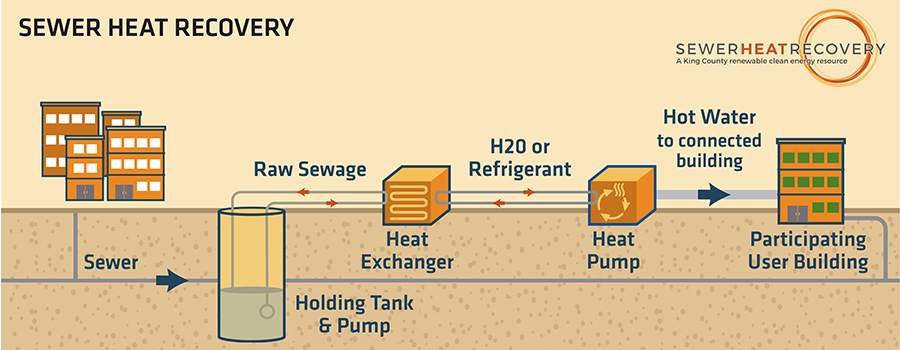How it works
Warm and hot wastewater flushed from homes and businesses is a significant energy source. The U.S. Department of Energy estimates that 350 billion kilowatt-hours of heat energy are flushed down the drains in the United States every year—roughly enough to power 30 million homes.
Through this technology, a portion of wastewater is captured in an underground holding tank where its heat energy is transferred in a heat exchanger, which allows a heat pump to extract that energy and transport it to a connected building's domestic hot water or heating or cooling system.
Repurposing this otherwise wasted heat energy resource is another way building owners can meet sustainability goals and positively contribute to climate action.

Illustration of process is an example. Technology requirements will vary.
Sewer heat recovery is a sustainable energy solution that reduces onsite fossil fuel combustion, lowers carbon emissions, and decreases a building’s carbon footprint in facilities that use hydronic (circulating water) systems for heating or cooling and/or facilities with significant domestic hot water requirements, such as schools, gyms, or commercial kitchens.

 Translate
Translate